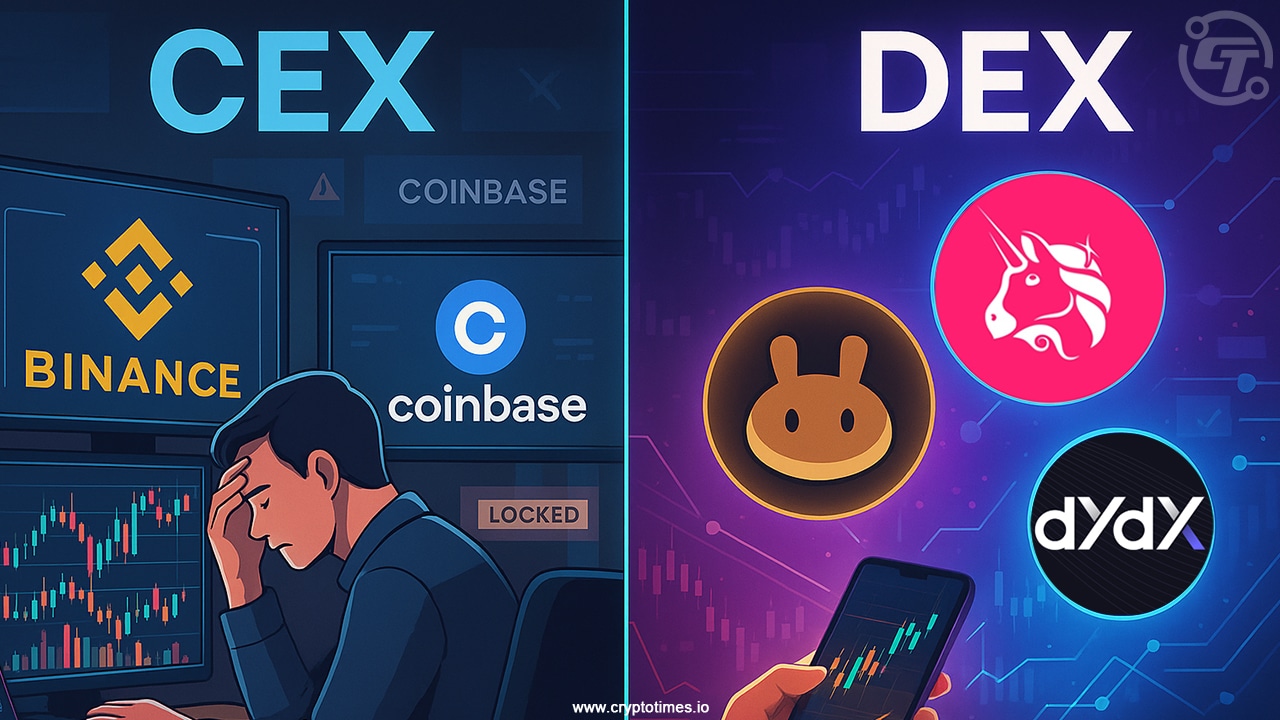DeFi Trading Surges: Outpacing Binance and Coinbase in 2023

The Shift in Cryptocurrency Trading: Why Decentralized Exchanges are Gaining Ground
As the landscape of cryptocurrency trading evolves, a noticeable shift is occurring among investors and traders. While centralized exchanges (CEXs) like Binance and Coinbase have long been favored for their speed and user-friendly interfaces, many are now gravitating toward decentralized exchanges (DEXs). This transition is fueled by the desire for greater transparency, control over assets, and fewer regulatory constraints.
- Understanding Centralized Exchanges (CEXs)
- What are Decentralized Exchanges (DEXs)?
- CEX versus DEX: A Comparative Analysis
- The Rise of DeFi: Compelling Data
- Reasons Behind the Shift from CEX to DEX
- Self-Custody and Greater Control
- Lower Transaction Fees
- Global Accessibility
- Integration with DeFi Services
- Challenges Faced by DEXs
- Complexity for New Users
- High Gas Fees and Network Issues
- Risks Associated with Smart Contracts
- Liquidity Shortages for Lesser-Known Tokens
- Limited Customer Support
- Future Outlook: Will DEXs Overtake CEXs?
- Conclusion
In fact, by May 2025, DEXs accounted for nearly one-fourth of the global crypto spot trading volume, with prominent platforms like Uniswap and PancakeSwap leading the charge. This article explores the dominance of DEXs in the crypto sphere and whether they might one day eclipse CEXs.
Understanding Centralized Exchanges (CEXs)
Centralized exchanges, or CEXs, are platforms that facilitate crypto trading by acting as intermediaries between buyers and sellers. Examples include major players like Binance and Coinbase.
When using a CEX, traders are required to create an account, undergo KYC verification, and deposit their assets on the platform. This arrangement allows the exchange to manage all trade executions and fund transfers efficiently. However, it also means users are entrusting their digital assets to a third party.
What are Decentralized Exchanges (DEXs)?
Decentralized exchanges (DEXs) offer a different model of trading entirely. Built on smart contracts across blockchain networks such as Ethereum, Solana, and BNB Chain, DEXs enable peer-to-peer transactions without the need to register or store assets with a third party.
Platforms like Uniswap and PancakeSwap empower users to retain full control over their funds and gain direct access to various decentralized finance (DeFi) services. While some technical knowledge may be necessary, DEXs provide a more open and permissionless trading environment.
CEX versus DEX: A Comparative Analysis
Here’s a breakdown of the main differences between CEXs and DEXs:
| Feature | Centralized Exchange (CEX) | Decentralized Exchange (DEX) |
|---|---|---|
| Fund Custody | Assets are controlled by the exchange. | Users maintain complete control of their funds in their wallets. |
| KYC Requirement | Users must complete identity verification for compliance. | No KYC needed – just connect your wallet and trade. |
| Trading Model | Proprietary order books match trades. | Smart contracts facilitate secure peer-to-peer exchanges. |
| Accessibility | May restrict users based on geographic location. | Open to anyone with a crypto wallet, free of location-based restrictions. |
| Fiat Support | Eases fiat deposits and withdrawals through banks. | Requires users to have crypto to trade; lacks direct fiat transactions. |
The Rise of DeFi: Compelling Data
Recent reports from CoinGecko reveal that CEXs experienced a significant downturn, with eight of the ten leading exchanges reporting substantial declines in trading volume. Binance saw a drop of 15.7% and Coinbase a 10.4% decline. Collectively, the top ten CEXs lost around $1.1 trillion in volume compared to the previous quarter, totaling about $5.4 trillion.
Conversely, data from DeFiLlama indicates robust growth for DEXs, which recorded a trading volume of $409.73 billion over the past month and approximately $12.78 billion in just 24 hours. This ongoing increase shows sustained DeFi adoption amid regulatory challenges.
As CEXs grapple with decreased user engagement, DEXs are earning the trust of a growing user base. The data suggests that traders are not only attracted to decentralized platforms for their privacy and control, but also due to their competitive trading volumes.
Reasons Behind the Shift from CEX to DEX
Several factors account for the migration of traders from CEXs to DEXs:
Self-Custody and Greater Control
With centralized exchanges often subjected to hacks and withdrawal issues, traders are keen on self-custody options. DEXs allow users to trade directly from their wallets, minimizing reliance on intermediaries.
Lower Transaction Fees
Traditional exchanges typically implement both maker-taker and withdrawal fees, plus occasional deposit costs. DEXs benefit from smart contracts and automated market makers (AMMs), resulting in reduced trading costs.
Global Accessibility
CEXs are often constrained by regional regulations and require KYC processes. DEXs, on the other hand, are accessible to anyone with a crypto wallet, providing an inclusive trading environment.
Integration with DeFi Services
DEXs offer seamless interaction with various DeFi activities such as token swaps, providing liquidity, and engaging in staking—all from a unified platform. This connectivity is invaluable for active traders seeking diversified options.
Challenges Faced by DEXs
Despite their rapid growth, DEXs encounter a series of challenges that must be overcome for them to truly surpass CEXs:
Complexity for New Users
User interfaces on DEXs can be daunting, especially for those unfamiliar with concepts like wallets, transaction fees, and slippage settings.
High Gas Fees and Network Issues
Transactions on platforms such as Ethereum can incur steep gas fees during peak times, making small trades cost-prohibitive for many users.
Risks Associated with Smart Contracts
Due to underlying code vulnerabilities, users face potential risks of losing funds if bugs or exploits occur. Trust is placed more in technology than in customer support.
Liquidity Shortages for Lesser-Known Tokens
While major cryptocurrencies typically enjoy high liquidity, newer or niche tokens may suffer from a lack of available liquidity.
Limited Customer Support
As DEXs are decentralized, they lack the active customer support teams to assist users with transaction errors or fund recovery.
Future Outlook: Will DEXs Overtake CEXs?
Experts project that with ongoing growth, DEXs could capture more than half of the market by 2030. Improvements such as gasless transactions and cross-chain trading enhancements are making DEXs faster and more efficient.
However, centralized exchanges will continue to dominate areas like derivatives and fiat gateways due to their established infrastructure and regulatory compliance. The future may also feature hybrid models, combining the advantages of both CEXs’ responsiveness and DEXs’ transparency.
Conclusion
The competition between centralized and decentralized exchanges does not have to result in a definitive winner. Each type of exchange plays a vital role in the ecosystem. While DEXs cater to users valuing autonomy and decentralization, CEXs still offer essential services such as ease of use, quick transactions, and fiat integration.
The growth of decentralized finance reflects a strong demand for increased user control and transparency. As the future of crypto trading unfolds, we can expect a trend toward more decentralized, user-driven, and interconnected platforms.







